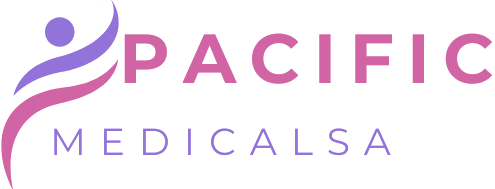Education has an effect on health disparities and helps raise awareness. As higher education usually leads to higher income, and people with higher income are more likely to be able to afford quality medical care and health insurance. With higher education, one can also be more informed about healthy habits and diets that contribute to well health. Going to school and learning biology can inform students how detrimental smoking and drinking can be to a person’s health. By learning these habits and the consequences, today’s children can avoid the habits their parents have that contribute to health disparities today. A study shows that smoking rates are lower for college graduates than those with a GED. This indicates that learning and understanding the effects that smoking has on a person’s health can lead to smoking prevention. The knowledge gained from the education received can cascade down to future generations, ultimately helping people become healthier. Older people who never got the chance to learn healthy habits can become educated from their well-educated children. This, in the end, improves the quality of life and lowers morbidity from diseases that are preventable (Effects of Education on Health). The key to success here is finding ways to educate children and the adults of lower social classes and getting them to change their behaviors.
Health disparities are affecting the lives of millions of people. As the years go by, the gap between different races and social classes is getting bigger with regards to the accessibility and quality of medical care. Numerous studies have concluded that there are several ways to help decrease these health disparities, one of the more notable ways being through the use of education. By understanding the role that education plays in health disparities, it may be possible to utilize education resources and initiatives to help alleviate the gap on health disparities between the different races and social classes.
Understanding Health Disparities
Health disparities have substantial societal and economic costs. It is estimated that health disparities have directly cost the US over $1.24 trillion between 2003 and 2006. This estimate does not include the indirect costs to society, including lost productivity, that result from health disparities. Health disparities are associated with many factors that limit the opportunities to be healthy, including the characteristics of a person, the availability and quality of health care services they receive, the social and environmental factors in the communities in which they live and work, and the structural and public policies that affect their opportunities in life. Understanding the ways in which these factors can lead to health disparities is a necessary prerequisite to the development of effective interventions to reduce disparities.
Health disparities are differences in health between groups of people, often defined by socioeconomic status, race/ethnicity, gender, age, or other social characteristics. Health disparities exist throughout different racial/ethnic groups and show a significant burden of illness, injury, and death. The existence of such disparities is a longstanding and intractable public health challenge, the elimination of which has become a widely recognized health policy goal. “Healthy People 2010” has defined an HP objective around the reduction of health disparities. The HP 2010 health disparities indicator is ambitious. It aims to achieve a 10% reduction in health disparities across a wide range of specific disparities.
The Impact of Education on Health
The positive impacts of education on the knowledge of individuals concerning their health cannot be overstated. In general, more education relates to higher knowledge of healthy behaviors, and thus a healthier lifestyle. Evidence of this is shown in a study by Smith et al., which found individuals with little education were more likely to engage in unhealthy behavior due to a lack of knowledge. An example of the success of health education in improving risky lifestyles comes from work looking at the effects of anti-smoking campaigns. Education can be effective as a preventive strategy for a number of health behaviors. This can be through parents passing on more healthy lifestyles and dietary habits to their children, if they are more knowledgeable about the health risks associated with obesity, for example. Additionally, more educated persons have a comprehensive view of health that goes beyond treatment and prevention to health promotion and protection. Higher levels of education have been positively associated with participation in health-promoting behaviors such as physical exercise and maintaining a nutritious diet. This is an important starting point for the subsequent findings on the mechanisms through which education can reduce health disparities.
Strategies for Education-Based Health Interventions
The preceding sections of this paper address the compelling need for educational strategies to reduce health disparities. A variety of educational strategies can be discerned from current literature and successful programs tested in a broad number of settings. Audience segmentation has been a central feature of many programs. The most common distinction is between adults and children, and materials targeted at each audience frequently differ dramatically in content and delivery. Audience segmentation can also be defined by socioeconomic status, literacy level, and race. Tailoring educational materials to the literacy level of the intended audience has proven an effective strategy in some settings and has been implemented with various levels of intensity.
For example, a public health campaign in California developed ethnically targeted nutrition brochures designed to be appropriate to varying literacy levels within each ethnic group. Written materials should be supplemented with appropriate audiovisual aids to accommodate diverse levels of education and literacy. High intensity interventions combining multiple years of education with rigorous efforts to improve reading skills have been tested in school settings with promising results. An innovative asthma education program tested a community health worker intervention designed to improve reading skills and facilitate improved use of written asthma action plans. This unique strategy sought to improve the literacy of the patient’s primary caregiver instead of the patient. Audiovisual aids range from simple and practical, such as a videotape teaching parents to administer home nebulizer treatments, to the highly sophisticated. Web-based programs are an increasingly popular educational tool, and while they have not been proven superior in every setting, they offer numerous advantages in delivering interactive, tailored education. An NIH-sponsored clinical trial of a web-based asthma management program demonstrated improvement in asthma outcomes and narrowed disparities for some key outcomes. Audiovisual aids can also take the form of culturally relevant storytelling. A compelling example is a soap opera video series developed by the Southwest ROSH asthma study. The Spanish language videos were designed to deliver asthma education in a format entertaining to adults while addressing cultural beliefs and other factors contributing to childhood asthma in Hispanic communities. Finally, a longitudinal, life-course approach to education is essential. A growing literature on the developmental origins of adult health and disease points to the potential for interventions targeting specific periods of the life course to prevent future disease and eliminate disparities in disease rates. A recent expert panel convened by Building the Future Advocating for Children’s Health and the W.K. Kellogg Foundation outlined a detailed strategy for childhood interventions to eliminate disparities in diabetes as an illustrative model for life-course disease prevention. This strategy calls for tight integration of interventions at the individual, family, and community level and employment of a diverse array of high-quality research and policy advocacy.
Conclusion
Education has long been viewed as a solution to the many facets of societal ills. The continuance of a life of poverty, the plague of ill health and infectious disease, the exponential increase in health care costs, and the shortage of educated health professionals are all pressing issues. Education has always been seen as a way to reduce costs, through teaching people to act in a preventive manner, educating them about the many facets of their health and disease, and teaching them to seek early treatment before issues become severe. However, the model on which the investment in education is based and the mechanisms by which education will have an effect are not clear. This paper sought to explore those elements in relation to one another, with a special focus on education as a tool to reduce health disparities.

